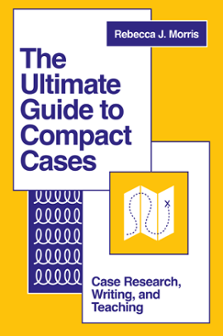
Index
The Ultimate Guide to Compact Cases: Case Research, Writing, and Teaching
ISBN: 978-1-80382-850-3, eISBN: 978-1-80382-847-3
Publication date: 1 September 2022
Citation
Morris, R.J. (2022), "Index", The Ultimate Guide to Compact Cases: Case Research, Writing, and Teaching, Emerald Publishing Limited, Leeds, pp. 269-273. https://doi.org/10.1108/978-1-80382-847-320221012
Publisher
:Emerald Publishing Limited
Copyright © 2022 Emerald Publishing Limited
INDEX
- Prelims
- 1. Why Write Compact Cases?
- 2. Compact Cases Versus Traditional Cases
- 3. Finding a “Good Idea” for a Compact Case
- 4. Researching a Compact Case
- 5. Writing a Compact Case
- 6. Writing the Teaching Note for a Compact Case
- 7. Writing Compact Cases with Students
- 8. Publishing a Compact Case
- 9. Teaching with Compact Cases
- 10. Looking to the Future
- Appendix 1: Annotated Copy Chipotle Case
- Appendix 2: Annotated Copy Chipotle Instructor’s Manual
- Index